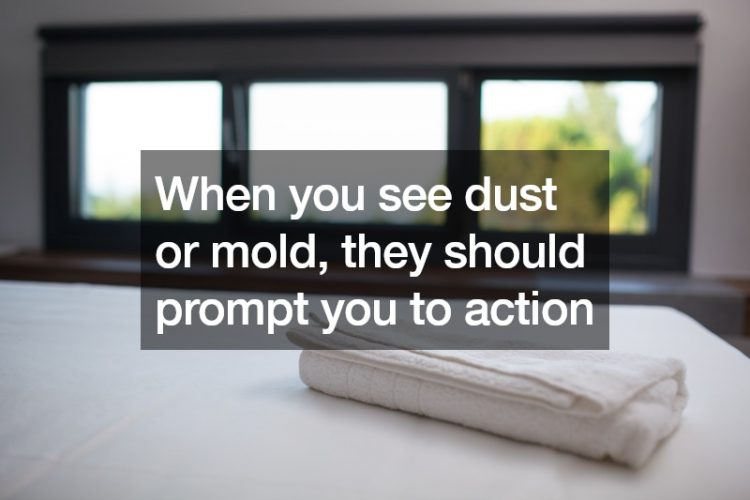
Mold is a problem that can occur in moist or enclosed areas of your home. The spread of mold can lead to the destruction of walls, insulation, and floor tiles. Mold can also be the cause of respiratory infections or allergic reactions.
Since mold enters the body’s respiratory system, you may worry about the relationship between mold and strep throat, or other dangerous symptoms. According to Vybe, mold weakens your immune system – and puts you at greater risk for infections. Another connection exists between mold and high blood pressure. Mold can cause a change in the circulation, and the associated respiratory problems can further increase your blood pressure.
Unfortunately, mold can also affect babies. Sneezing, wheezing, or other allergy symptoms can be signs of mold exposure in babies. If you believe your baby has been exposed to mold, take the baby to a doctor as soon as possible.
One common type of mold is black mold. If you see black mold on ceiling tiles or walls, you can begin black mold removal on your own. According to Homes and Gardens, the first step is to wash the area with diluted baking soda or bleach and to then use a humidifier.
One of the hazards homeowners must be vigilant against at all times is mold. Molds are fungi that thrive in warm and moist areas. Although mold can grow everywhere in a home, it isn’t visible until it increases enough to be a colony of mold. A colony is more than one group of mold; it is an interconnected network of spores.
According to Mold-help, the mold life cycle has four stages: spore, germ, hypha (branching out), and mycelium (network). Mold may be challenging to recognize and some may find it difficult to tell if what you see is mold or dust. Angi reports that while dust is typically gray and appears as a thin layer on the surface where it is found, mold is usually green or black. Another noticeable difference is that mold has a noticeable “musty” smell. Mold also impedes health much more severely than dust.
When you see dust or mold, they should prompt you to action, since both are dangerous to breathe. Both dust and mold can cause respiratory illnesses. After removal, it’s essential to arrange for mold remediation. Professional mold remediation companies are intended to prevent mold from returning to the areas where they were found.

Molds are fungal microbes that feed on decaying organic matter. There are more than 100,000 different kinds of mold throughout the world with new species being discovered regularly. Some varieties of mold are harmless and some are even helpful such as penicillium chrysogenum which was accidentally discovered by Alexander Fleming in 1928; mass-produced penicillin was used as a life-saving antibiotic by WWII, saving countless combatants from deadly infections. Unfortunately not every kind of mold is safe however.
Where Does Mold Thrive?
There are two main factors that influence mold growth: moisture and temperature. Most molds thrive at normal indoor temperatures ranging from 40 to 100 degrees, although some species may be exceptions. The damp conditions that encourage the growth of mold is found in nearly half of all structures in the United States by some estimates. Bathrooms, garages, basements, and even carpeting are all potential breeding sites for mold.
The Danger Posed By Mold
There are over 200 toxic substances produced by common molds; these mycotoxins, as they are called, contributes to decreasing indoor air quality standards. The National Resources Defense Council estimates that there are roughly 131 million Americans who regularly breath low-quality air due to pollutants caused from mold and other sources. The Environmental Protection Agency recently ranked indoor air pollution as one of the top five environmental dangers to one’s health. If left unchecked, mycotoxins can cause serious respiratory concerns over time, especially for those who suffer from asthma who are especially sensitive to airborne particulates.
Home Mold Inspection
Many Americans carry the misconception that if they can’t see mold, their home is free from mold. Mold can potentially grow in every nook and cranny of a structure, requiring the expertise of a home mold inspection professional to help determine whether or not there is a mold problem. If there is mold, professionals can help advise homeowners on the various mold remediation options available to them. Depending on the severity of the growth, mold remediation could take a few hours to upwards of five days to remove. Schedule a home mold inspection to ensure that the air in your home is healthy and free of mycotoxins.

